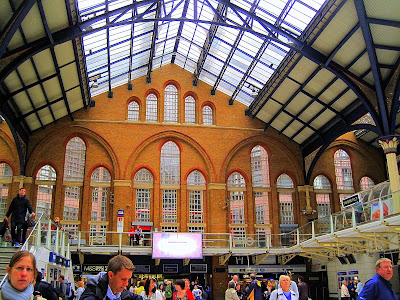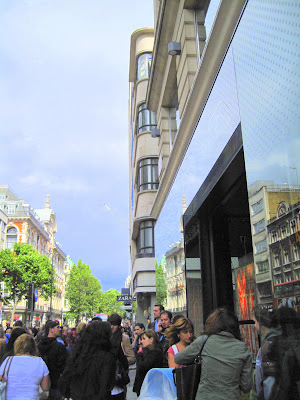
The weather was so good to us despite of the wintry atmosphere, the sun still set not to mention the chilly wind that we needed to endure. Tourists from around the globe were enthusiastic to see this wonder. I, too was very excited to finally take a glimpse of this mysterious rocks.
 The admission prices were affordable so need to worry. There are loads of travel agencies that offer tours to this place and the like.
The admission prices were affordable so need to worry. There are loads of travel agencies that offer tours to this place and the like. It has an audio guide so u can walk along the paths at your own pace and simply enjoying the view.
It has an audio guide so u can walk along the paths at your own pace and simply enjoying the view. GRACE WAS HERE! What a delight to my face! :)
GRACE WAS HERE! What a delight to my face! :)Of course, this trip would not be complete without my keychains, guide book and mini model souveneir :)
- Stonehenge was built between 3100 – 1100 BCE.
- The circle was aligned with the midsummer sunrise, the midwinter sunset, and the most southerly rising and northerly setting of the moon.
- The ground plan and structural engineering of Stonehenge incorporate sophisticated mathematical and geometrical understandings on the part of its builders.
- There were two types of stones used in its construction: the ‘bluestones’ (weighing as much as four tons and brought from 240 miles away) and the Sarsen stones (averaging eighteen feet in height and twenty-five tons in weight).
- It has been estimated that the construction of Stonehenge required more than thirty million hours of labor.
- More than nine hundred stone rings exist in the British Isles. Of these, Stonehenge is the most well known.
- The megalithic monuments of Britain and Europe predate those of the eastern Mediterranean, Egyptian, Mycenaean and Greek cultures.
- The Druids had nothing to do with the construction of the stone rings. Druids are known to have conducted their ritual activities mostly in sacred forest groves.
Stonehenge Purposes
- Prior to the 1950’s most archaeologists believed that Stonehenge’s use had been limited to the ritual activities of different Neolithic chiefdoms. However, it is now known that Stonehenge had another equally important function, which was its use as an astronomical observatory.
- In the 1950s and 1960s, the Oxford University engineer Professor Alexander Thom and the astronomer Gerald Hawkins pioneered the new field of archaeoastronomy - the study of the astronomies of ancient civilizations. Conducting surveys at Stonehenge and other megalithic structures, Thom and Hawkins discovered many significant astronomical alignments among the stones. This evidence indicates that Stonehenge and other stone rings were used as astronomical observatories.
- Stonehenge was simultaneously used for both astronomical observation and ritual function. By gathering data regarding the movement of celestial bodies, the Stonehenge observations were used to indicate appropriate periods in the annual ritual cycle. During those periods, among them being the solstices, equinoxes and different lunar days, festivals and ceremonies were held.
Stonehenge Legends
- Myths and legends of Stonehenge shed light on the nature of the activities and ceremonies performed at the festivals. For example, the legendary Merlin tells King Aurelius:
Laugh not so lightly, King, for not lightly are these words spoken. For in these stones is a mystery, and a healing virtue against many ailments. Giants of old did carry them from the furthest ends of Africa and did set them up in Ireland what time they did inhabit therein. And unto this end they did it, that they might make them baths therein whensoever they ailed of any malady, for they did wash the stones and pour forth the water into the baths, whereby they that were sick were made whole. Moreover they did mix confections of herbs with the water, whereby they that were wounded had healing, for not a stone is there that lacketh in virtue of leechcraft. - And Layamon, a 13th century British poet, also speaks of the healing quality of Stonehenge.
The stones are great
And magic power they have
Men that are sick
Fare to that stone
And they wash that stone
And with that water bathe away their sickness





































